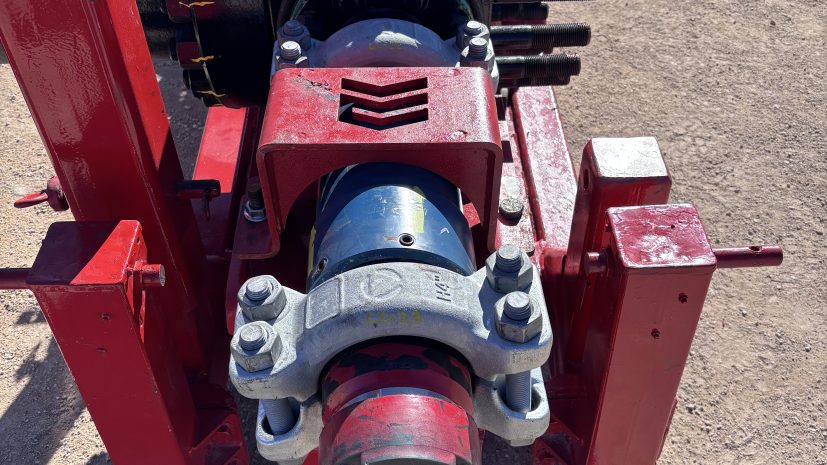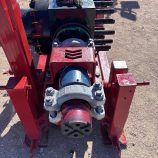Gilmore Agiliti™ Check Valve | Featured in American Oil and Gas Reporter-Tech Trends


Posted: February 4, 2025
Electric Frac Fleets Continue Evolving January 2025 Tech Trends
By Colter Cookson
Check Valves
After three years of development, Gilmore is commercializing a check valve that lasts three-six times longer than traditional alternatives, says Jean-Louis Doguet, the company’s vice president of unconventional. “A typical flapper check valve on a standard frac pad running 40/70 and 100 mesh sand will last 200-300 hours before it has to be repaired,” he reports. “Utilizing advanced coatings and pin materials allow some premium products to average around 600 hours, depending on the environment, treating parameters, proppant type and volumes, and chemicals. With our new valve, which moves away from the flapper concept, we have units passing the 1,800-hour mark.”
According to Doguet, this longevity should simplify and assist operational efficiency. “Historically, the best valves last about a month, which means companies need to perform maintenance every 30 days or so,” he says. “Usually, that maintenance involves unscrewing the top of the flapper check valve with a wrench replacing the flapper and/or the seal/seat and screwing the top back on. This takes about five minutes for each valve and requires a repair kit.”
In contrast, Gilmore’s more durable valve can stay in the field for about three months before any maintenance needs to take place, Doguet reports. He adds that the valve almost eliminates the risk of washing out a body during the job. “Washouts do not happen as often as they used to, but when they do occur, they force the crew to stop pumping in order to replace the valve,” he says. “That downtime can be expensive.”
To explain why Gilmore’s valve is unlikely to wash out, Doguet points out that it has a stainless-steel wear sleeve inside that protects the body from erosion. Over months of service, this sleeve will wear, by design, and will be replaced as necessary as part of our maintenance schedule. “We have not had a sleeve exhibit high wear yet, so the risk of washing out in the middle of a job is highly unlikely,” Doguet suggests.
In general, Doguet attributes the valve’s longevity to a combination of more durable materials, components and a patented design employing fluid dynamics.
Because the valve contains premium materials, it is more expensive to manufacture than a traditional valve, Doguet notes. The unique design also means that technicians need special training to work on it. With those factors in mind, he says Gilmore decided to provide the valve through a rental model rather than selling it to customers and expecting them to perform the maintenance.
“We think this approach is easier for our customers,” Doguet says. “We deliver the valves to location and repair them when they need to be repaired, so our customers do not need to buy valves and repair kits, manage inventory, or spend time messing with check valves. Instead, they can focus on more critical tasks, such as servicing pumps.”
The monthly rental rate range for the longer-lasting valve provides cost effective economics for customers when all factors are considered, Doguet says.
According to Doguet, the valve has been tested in the harshest conditions. For example, it has weathered resin-coated and ceramic sands that can be particularly erosive to equipment, and high flow rates and pressures with produced water on back-to-back pads through 1800 hours of service.
“The biggest hurdle for us has been convincing customers that the valve lasts as long as the field trials indicate it does,” Doguet says. “The longevity is so far ahead of the norm that it is hard for people to accept the test data. We usually meet with them in person, review design characteristics and offer a trial period. They want to see it to believe it. It is understandable considering past claims made within the industry segment.”
Despite that hurdle, Doguet sees adoption growing. “Today, we have several customers running our valves, most of them in the Permian,” he says. “In the first half of 2025, we are planning to manufacture approximately 1,000 units with a variety of industry connections. The exact number will be market driven.”
While he expresses Gilmore’s pride in the current design, which he calls market-changing, he emphasizes that Gilmore plans to continue refining it. “We are going to continue making this valve better,” he says. “In a perfect world we can get this valve to a 6-month operating life.”
See full article here





